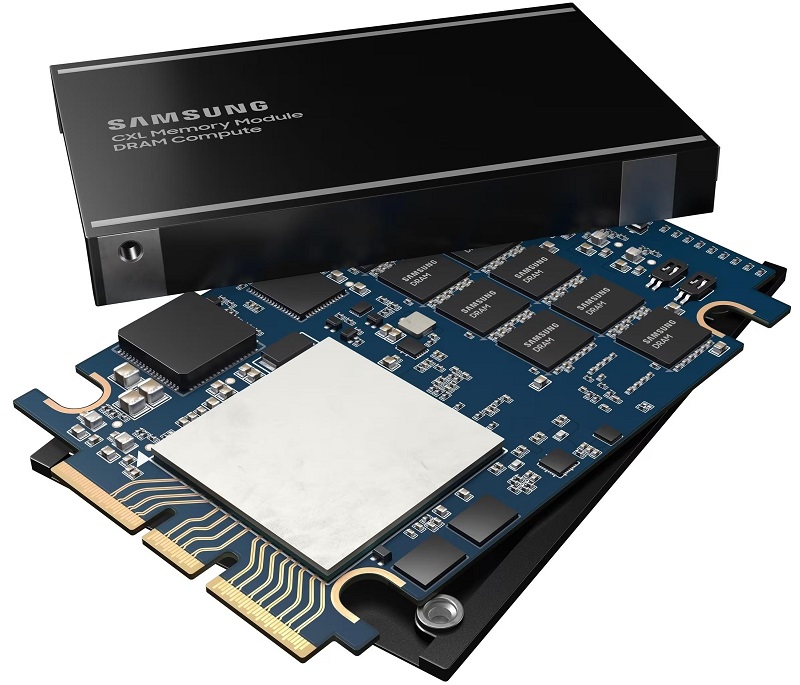CXL is a new type of interface designed to improve the efficient use of resources such as CPU, memory, GPU, and memory in computing systems. In traditional architectures, various types of devices such as memory and memory are usually connected to the CPU through separate interfaces, so when these devices need to communicate with each other, they must go through multiple interfaces, which often causes latency problems. This latency phenomenon has become even more prominent as the demand for data processing in areas such as AI and machine learning has increased dramatically. CXL, on the other hand, alleviates this problem by simplifying the communication path between devices.
Samsung has been working on CXL memory modules in recent years, and launched the industry's first CXL-based 512GB CXL DRAM as early as 2022. Choi Jang Seok, head of the new business planning team at Samsung's memory division, made it clear at a recent event that Samsung plans to produce 256GB CXL DRAM with CXL 2.0 support by the end of this year, saying that the CXL market is expected to enter a booming phase in the second half of the year and show explosive growth by 2028.
CXL (Compute Express Link) memory technology is considered the next big technology in the field of AI and high-performance computing (HPC) due to its ability to improve memory performance, expand memory capacity, and reduce latency. With the rapid development of large AI models, there is an increasing demand for memory bandwidth and storage speed, and CXL technology helps solve the so-called "memory wall" problem, which is the speed mismatch between processor and memory, by providing cache-consistent memory sharing.

Figure: CXL memory may sought after in AI era
CXL technology improves memory utilization efficiency and system performance by enabling memory expansion and decomposition, allowing accelerators such as CPUs, GPUs, DPUs, and FPGAs to directly access shared memory pools. For example, CXL version 3.0 provides various accelerators with direct access to memory pools, which is especially beneficial in AI cloud servers and database servers to speed up analysis and run larger in-memory databases.
The 512GB CCL AIC expansion card released by Longsys further demonstrates the advantages of CXL technology in providing ultra-large capacity memory support. Supporting the CXL1.1 and CXL2.0 standards, the card is capable of providing high-bandwidth, low-latency extended memory for a single server or cluster of servers, which is critical for areas such as AI computing, HPC, and data centers.
In addition, the development of CXL technology has also received extensive support from the industry. The CXL Alliance, led by Intel, now has more than 255 members, including major CPU, memory, storage, and networking equipment manufacturers. As CXL technology continues to evolve, it is expected that the interconnection of compute nodes and memory nodes in data centers will become faster, more efficient, and more flexible in the future.
Overall, CXL memory technology is expected to be a key technology to support AI and high-performance computing needs due to its ability to improve memory performance, scalability, and reduce latency. With the continuous development of CXL technology and the in-depth expansion of its applications, it is expected to play an increasingly important role in the field of high-performance computing, and help achieve more efficient computing in the fields of AI model training, big data analysis, and scientific computing.






